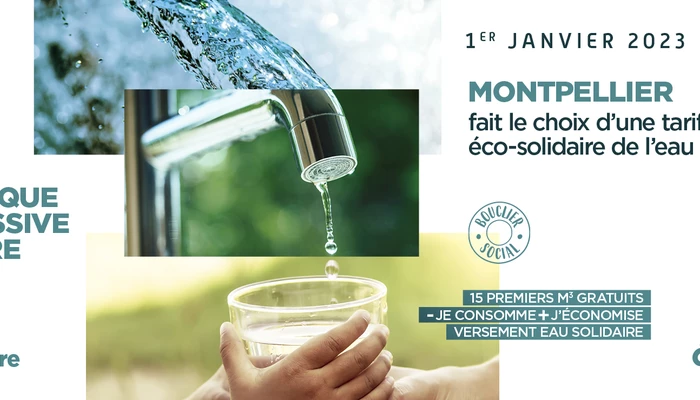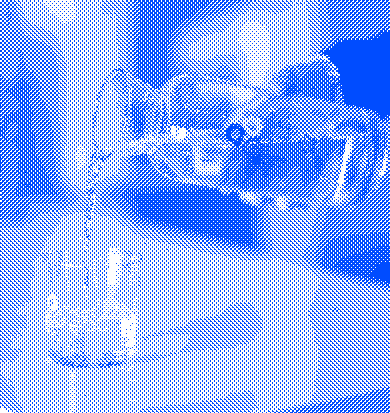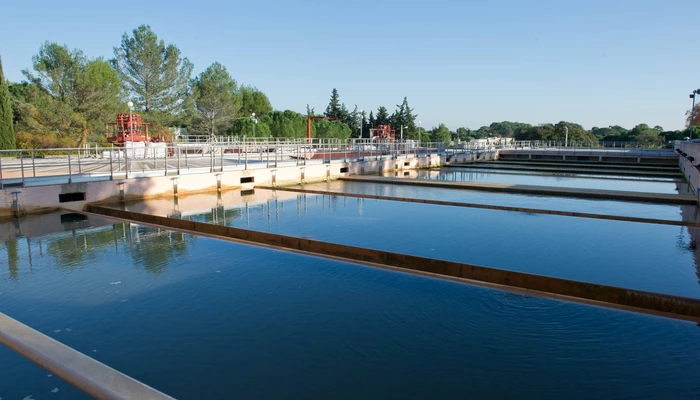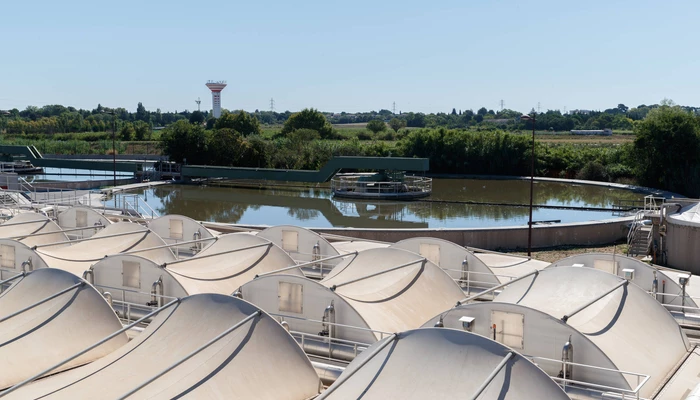Drinking water management in the region
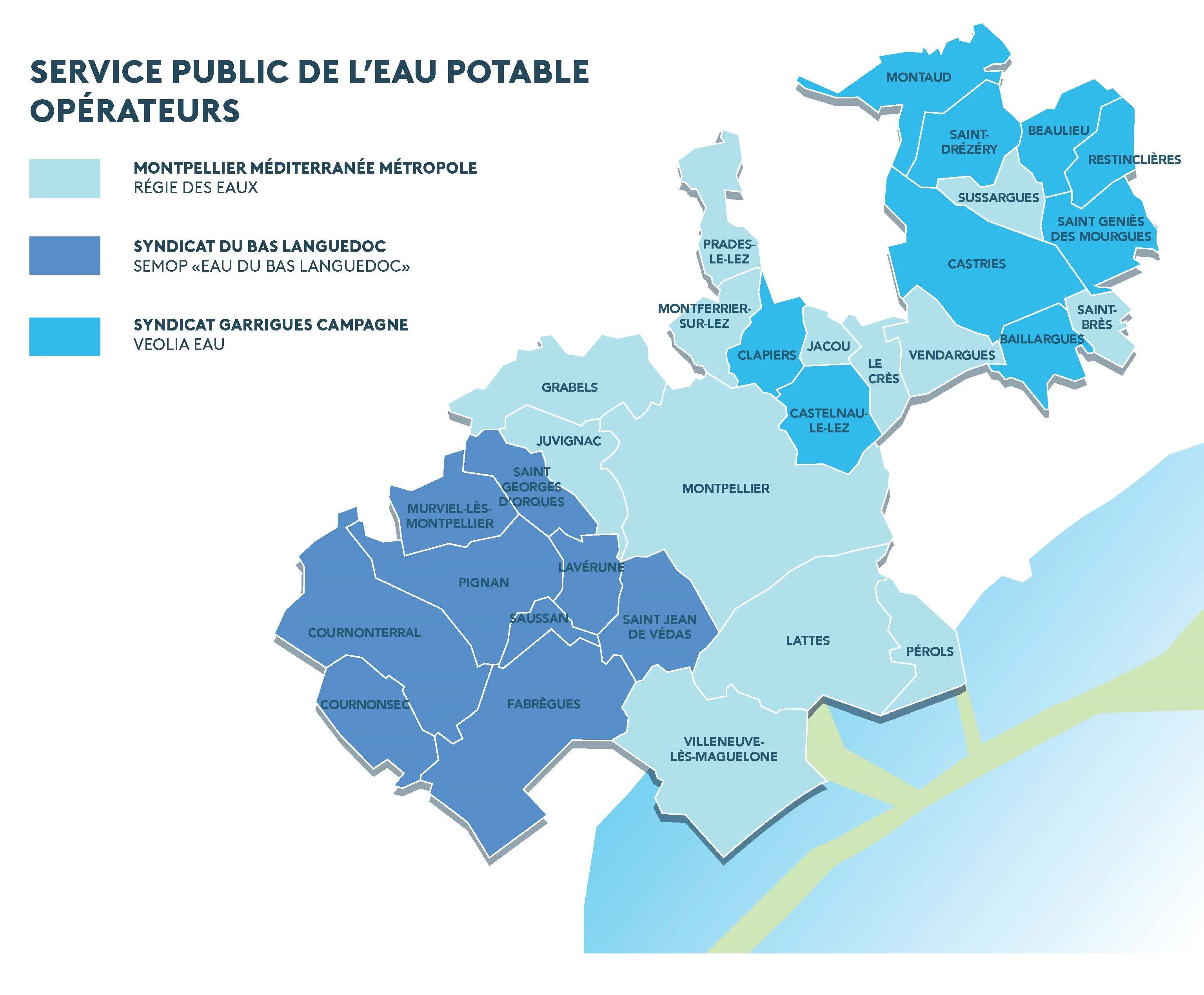
Montpellier Méditerranée Métropole provides the public drinking water service : it is the organizing authority that defines the strategy and programs investments, determines the service tariff, deducted from the user's drinking water bill, and appoints and controls the operator, who carries out the service (connections, maintenance of works, billing, etc.).).
3 operators provide this public service in the region:
- the Régie des Eaux, a public water company that operates directly in 13 communes;
- the Syndicat du Bas Languedoc (SBL), which has entrusted operation to a single-purpose semi-public company, Eau du Bas Languedoc, for 9 communes;
- the Syndicat Mixte Garrigues Campagne (SMGC), which has entrusted operation to the delegatee Véolia for 9 communes.
Within the scope of the Régie des Eaux, Montpellier Méditerranée Métropole is drawing up and piloting the Schéma Directeur d'Eau Potable 2015-2035, which provides for €195 million in investments, the project management of which is the responsibility of the Régie des Eaux.
Construction of a drinking water treatment unit on the VALEDEAU site, creation of pumping stations (in Montmaur, for example), rehabilitation of more than thirty water reservoirs, reinforcement of the drinking water supply to several communes, creation of networks... These numerous operations help to secure the territory's drinking water supply and anticipate future needs linked to demographic growth.
In addition, pipe maintenance and renewal work is also carried out every year, to perpetuate the network and reduce water losses to a minimum.
.Who to contact
Where does my tap water come from?
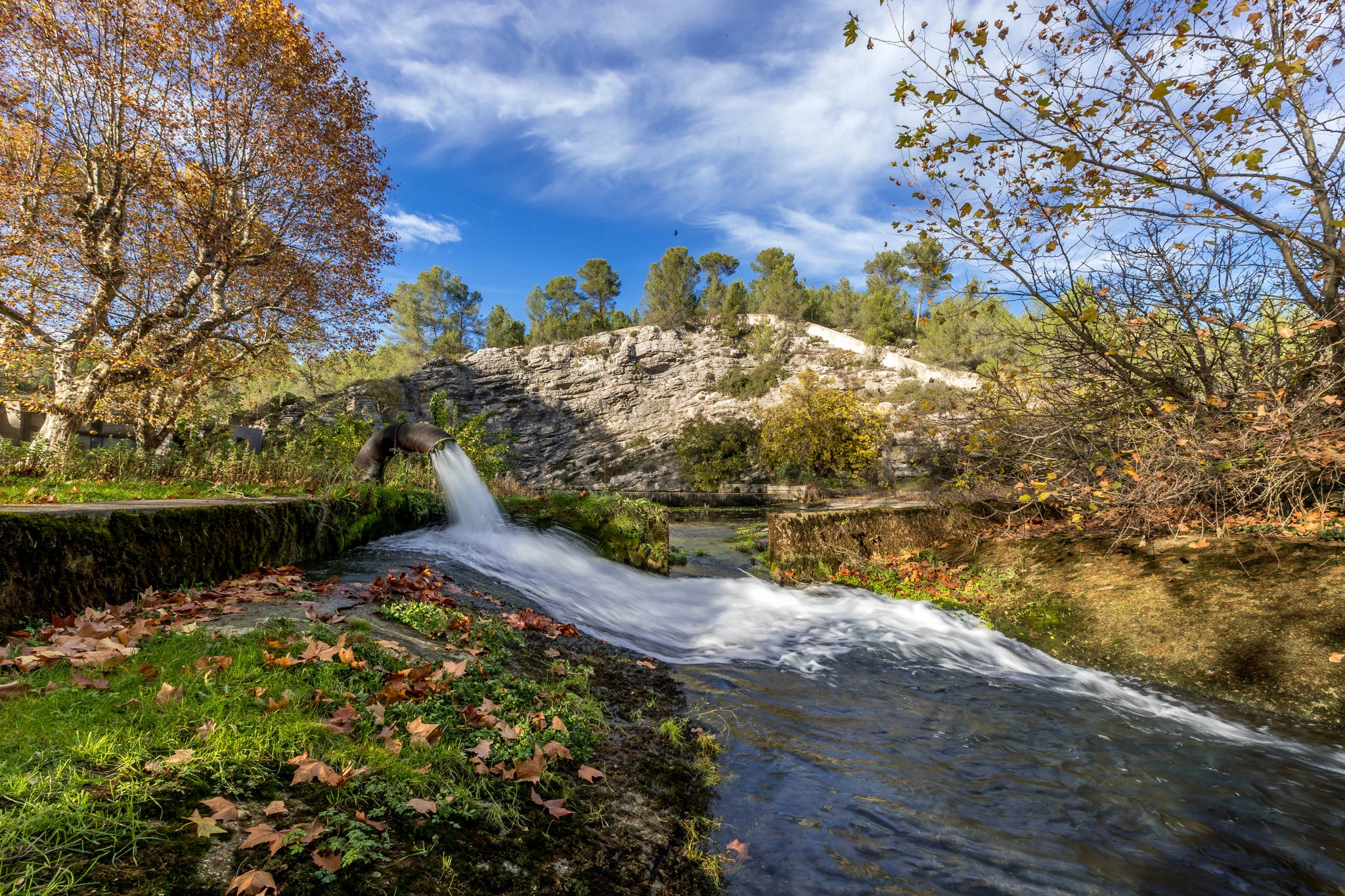
Water sources
The water that comes out of your tap is taken from the natural environment, pumped by drilling into underground aquifers or taken at the surface from watercourses. To prevent pollution of these sources, protection perimeters are installed and regular checks carried out.
The main resource in our territory is the Lez spring, which provides the vast majority of the drinking water supply for the population of the 13 communes located within the Régie des Eaux.
Other resources are drawn on to cover and secure the entire population's water needs, notably water from the Canal du Bas-Rhône Languedoc (BRL) as well as local boreholes such as those in Grabels or Villeneuve-lès-Maguelone.
Inhabitants of the communes served by the Garrigues Campagne syndicate, to the east of our territory, are supplied by local boreholes including the most important of these, the Crouzette catchment in Castelnau-le-Lez.
To the west, the inhabitants of the 9 communes served by the Bas Languedoc syndicate are supplied mainly by water pumped from the Hérault alluvial aquifer and by water from the Canal du Bas-Rhône Languedoc (BRL).
Water treatment
The water taken must be treated to make it fit for consumption. This treatment can be very simple, with just chlorine disinfection when the water collected is already of good quality, or more complex, in which case a water treatment plant is required. Montpellier Méditerranée Métropole has its own treatment plant: the François ARAGO plant.
Once it has been rendered potable, the water is conveyed through closed piping networks. It is stored in reservoirs that are generally located high up (underground basins on hilltops or water towers) and then conveyed to its final destination, the user's tap, through a complex distribution system equipped with valves and regulation devices.
The source of the Lez
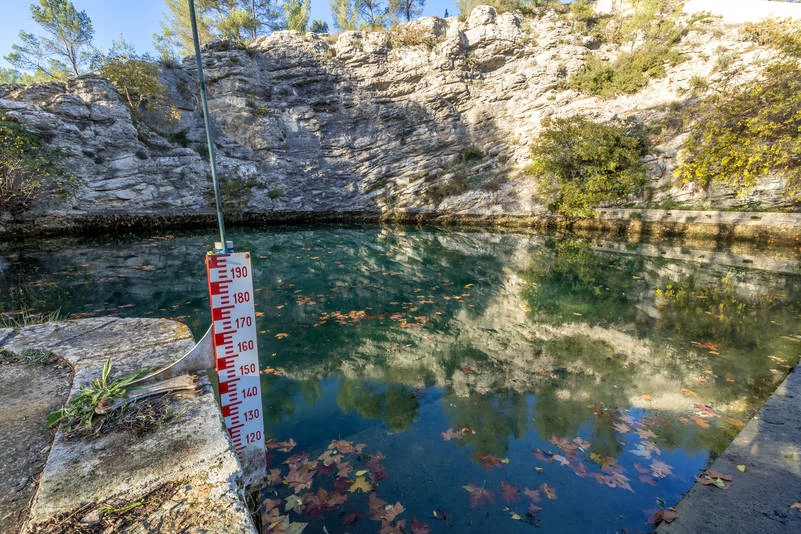
The Lez spring supplies drinking water to 74% of the population of the Metropole's 31 communes. It lies to the north of Montpellier, in an area of limestone rock several tens of millions of years old, conducive to the infiltration and storage of rainwater, thanks to the many fissures that run through it.
It has been exploited since the 18th century, thanks in particular to the famous 19 km aqueduct built by the engineer Pitot, linking the spring to the Peyrou reservoir.
The quality of the water from the Lez spring is subject to regular controls and in-depth monitoring. Quite highly mineralized, it has no chronic pesticide contamination and is of good chemical and bacteriological quality, except very occasionally, in the event of heavy flooding. However, as is often the case in this type of geological zone (known as a karstic aquifer), the vulnerability of the Lez spring is high, and Montpellier Méditerranée Métropole is particularly vigilant about preserving it.
The water from the Lez spring is captured by means of 3 pumping units consisting of two submersible pumps in series, operating at variable speed and delivering from 600 to 1,000 l/s.
The water levels measured at the Lez spring fluctuate with the seasons, and especially with periods of intense pumping (during the summer) and periods of recharge (rainfall, mainly in autumn).
Active management is then practiced. When the population's needs are high (summer), this involves pumping flows higher than the natural flow of the underground conduit. Reserves are thus heavily used, but are naturally replenished during autumn rains.
The rest of the time, the pumped flow is lower than the natural flow. This active management is thus sustainable and preserves this water resource essential to the life of our territory.
Various studies have been carried out, and are regularly updated, by Montpellier Méditerranée Métropole to increase knowledge of how the Lez spring functions, improve its management and assess its potential in the years to come. For example, the Lez - GMU (Gestion Multi-Usage) project, carried out with the Agence de l'eau, BRGM, the Département de l'Hérault and the public laboratory HSM (Hydro-Sciences Montpellier), has enabled various simulations to be carried out according to different scenarios incorporating climate change and demographic developments in the area, to ensure the potential of the water resource and its long-term preservation.
.Facing future challenges together
Drinking water distribution is vital to the region, guaranteeing the lives of its inhabitants and the sustainability of its development. Yet the resource is becoming increasingly scarce, and access to water for all, at a fair price, is sometimes compromised in the face of social injustice. Montpellier Méditerranée Métropole is mobilizing around these 2 issues of the future.
Save water!
Together, we can work towards sustainable use of water resources, by adopting, both in our long-term strategies, and in our daily actions, the right gestures to save water.
Metropole and communes can, for example, implement 3 levers of action:
- Study, i.e. gain a better understanding of water-related assets, monitor consumption, exploit data from remote reading systems, etc.
- Equip, i.e. install metering systems and water-saving equipment, replace faulty pipes, draw up a leakage procedure and repair protocol, install pressure reducers and water shut-off valves, etc.
- Awareness-raising, i.e. training communal staff, informing users, educating schoolchildren, etc.
Users, you, us, can also take action in our daily lives:
- privilege showers to baths, and don't leave water running unnecessarily;
- check your connections and pipes to spot leaks;
- privilege Mediterranean plants, which consume little water, and set up a drip system to water your garden more efficiently.
So, on March 17, 2022, Montpellier and 16 other communes* in the Metropole received the "water-efficient commune" label, created in 2021 by the Agence Locale de l'Énergie et du climat (ALEC) de Montpellier Métropole. This label illustrates the many actions implemented in 2021 by these communes in favor of reasoned management of water resources.
*Castelnau-le-Lez, Castries, Clapiers, Cournonsec, Le Crès, Fabrègues, Grabels, Jacou, Juvignac, Lattes, Lavérune, Montferrier-sur-Lez, Murviel-Lès-Montpellier, Prades-le-Lez, Saint-Drézéry and Vendargues.
For more information, visit the ALEC website, whose aim is to raise awareness of energy and water management, develop renewable energies and provide technical support for project developers.
Let's show solidarity!
In 2023, within the scope of the Régie des Eaux (i.e. 13 communes), an eco-solidary water pricing system will combine user responsibility in their consumption, with the introduction of a progressive tiered tariff, and solidaritý for the most vulnerable, with the introduction of direct assistance in paying their bills.
In practice
